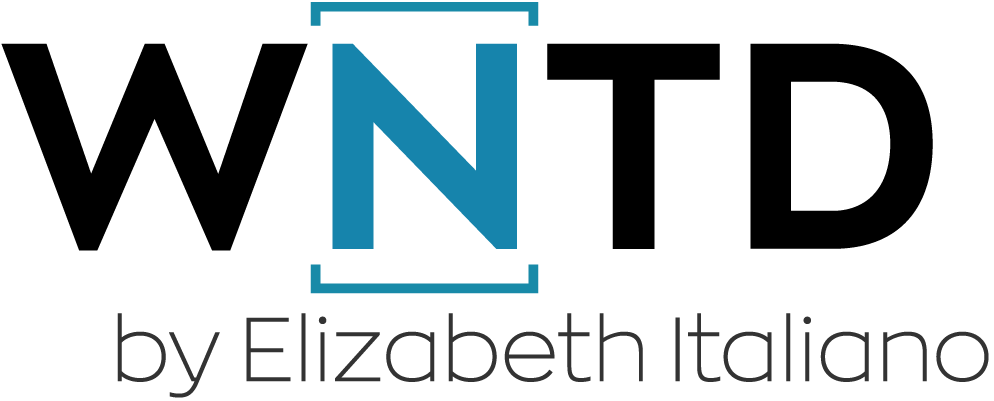In revenue-generating or revenue-enabling roles like sales, marketing, sales enablement, customer success, and account management, data and strategy are crucial. But what often gets overlooked is the power of storytelling—the ability to connect with prospects, customers, and stakeholders on a human level by presenting information in a way that resonates emotionally and logically.
Whether you’re pitching a new product, nurturing a long-term relationship, demonstrating your product’s capabilities, or presenting quarterly results, storytelling can make your message more compelling and memorable. One of the most effective ways to structure a story is through the PART framework: Problem, Action, Results, and Trigger. This structured approach ensures your story connects with the audience, aligns with their needs, and drives them toward the desired outcome.
In this article, we’ll explore how you can use the PART framework to tell powerful stories that enhance your effectiveness whether you are prospecting, writing compelling content, training reps or clients, securing renewals, onboarding new clients, or more. Additionally, we highlight the tips for demoing products, as it is one of the most overlooked areas for storytelling. Yet, the best demos go far beyond a simple walkthrough of the product and effectively tell stories that resonate and drive home the value of your solution.
Why Storytelling Matters for Revenue Roles
Imagine trying to learn about a lunar mission from the 1970s. Do you think you’d absorb and retain more from watching Apollo 13—a movie that vividly brings the mission to life—or from reading a textbook that merely lists the events and important dates? Storytelling transforms otherwise dry data into a narrative that can influence decisions and inspire action. Consider how powerful storytelling can be in the following contexts:
- Sales: Crafting stories about how your product solved a major issue for a client builds trust and credibility.
- Marketing: Storytelling can create emotional connections with audiences, making campaigns more memorable and effective.
- Sales Enablement: Storytelling helps train sales teams by giving them relatable, real-world examples they can draw from in customer interactions.
- Customer Success: A compelling success story can help re-engage customers who may be losing interest or struggling with adoption.
- Account Management: Storytelling about how a client achieved success with your solution can secure renewals and upsells.
There is compelling scientific data that supports the power of storytelling. In fact, studies show that stories are up to 22 times more memorable than just sharing facts. When you tell a story, your prospect or client is more likely to recall your message long after the conversation has ended.
This is one reason why storytelling can significantly enhance your sales and renewal efforts. Research also indicates that emotions play a key role in driving purchasing decisions. A well-crafted story triggers emotional responses, making prospects more likely to resonate with your message and take action. While rational thinking is what people and companies use to justify purchases, it’s often emotion that drives the decision-making process and secures buy-in at an individual level.
Storytelling also creates deeper connections with your audience by activating neural coupling—a phenomenon where the listener’s brain mirrors the activity of the storyteller’s. This fosters a sense of empathy and trust, building rapport and making your message more impactful.
To tell stories effectively, you need a framework to organize and deliver your narrative in a clear, impactful way. That’s where the PART framework comes in.
Breaking Down the PART Framework for Storytelling
The PART framework—Problem, Action, Results, and Trigger—is a simple but powerful storytelling structure that can be applied to a wide range of scenarios in customer-facing situations.
1. Problem: Setting the Stage
Every compelling story begins with a problem or challenge that needs solving. For revenue roles, the problem is usually related to a customer’s pain point, a market challenge, or a performance gap. When you identify and articulate the problem clearly, you engage your audience from the outset by addressing something they care about.
In sales, for example, you might start with a story about how a prospective client was struggling with declining revenue because their sales pipeline lacked visibility. When performing product demonstrations, framing your demo around a customer’s specific problem adds context to each feature you show, helping the prospect understand how your solution can help them.
Tips for Presenting the Problem:
- Make it relatable: Ensure the problem you’re describing is something your audience understands and has likely encountered.
- Be specific: Use real-world examples or data to ground the problem in reality.
- Keep it customer-centric: Frame the problem from the perspective of the client or audience to create empathy.
2. Action: The Solution in Motion
Once the problem is clear, the next part of the story is the action. This is where the steps taken to address the problem come into play. In a sales context, this would be the process of introducing your product or service as the solution. In customer success or account management, this could involve a series of interventions or strategies implemented to help the client achieve their desired outcome.
When performing product demonstrations, the action section is where you show rather than tell. Use the demo to walk your prospect through exactly how your product will solve their specific problem. Don’t just focus on features—demonstrate how those features translate into value.
Tips for Presenting the Action:
- Be detailed but concise: Explain the steps, but keep it focused on what your audience needs to know.
- Highlight collaboration: Show how you worked with a client or a team in the past to solve their problem and achieve the solution, demonstrating partnership.
- Emphasize the unique solution: What makes your approach or product different? Why is it the best solution for the problem at hand?
3. Results: The Impact of Your Actions
This is where your story delivers the punch: the results. What tangible, measurable outcome does your solution deliver or delivered for similar clients previously? Did the company increase revenue by 30%? Did the client reduce churn by 15%? Or did you help improve operational efficiency and cut costs by 20%?
When demoing a product, you can make this section incredibly powerful by showing real-world examples or data that demonstrate the product’s impact. Instead of just saying, “Our platform improves efficiency,” show how it increased productivity by X% for a similar client. Giving real-life examples and results helps build credibility and make your solution tangible in the mind of your audience.
Tips for Presenting the Results:
- Use data: Where possible, quantify the results to make the impact clear and compelling.
- Relate the results back to the problem: Ensure the results directly address the initial problem to create a cohesive narrative.
- Use emotional language: Results can also have an emotional impact. For example, not only did the company save money, but in doing so it was able to reallocate funds (and personnel) to new initiatives and avoid the risk of layoffs.
4. Trigger: Why the Solution Is Urgent
The final piece of the PART framework is the trigger—the reason why the action needs to happen now. Why is the problem urgent? What external factors make it critical to address immediately?
The trigger adds urgency and relevance to your story, showing that solving the problem isn’t just important—it is essential. In a sales or product demo context, this might be a competitive threat, a looming financial quarter-end, or a pressing operational need that your product addresses immediately.
By identifying the trigger, you create a sense of importance, showing your audience why waiting isn’t an option (cost of inaction) and why your intervention is timely and critical.
Tips for Presenting the Trigger:
- Identify time-sensitive issues: Focus on external deadlines, competitive pressures, or business milestones that are making the problem urgent.
- Tie it to real-world consequences: Consider bringing up a story from another client: what would’ve happened if the action had not been taken? This adds stakes to the story.
- Demonstrate foresight: Show an example from the past that by acting when you did, you were able to preempt bigger problems or seize key opportunities.
Applying PART in Different Revenue-Generating Roles
In this section let’s explore how you can apply the PART framework to different revenue roles and situations.
In Sales: Turning Product Pitches into Stories
Imagine you’re pitching a new prospect. Instead of jumping straight into product features, start by telling a story using PART:
- Problem: “One of our clients in your industry was struggling with a lack of visibility in their sales pipeline. They were losing deals because they couldn’t prioritize the right opportunities.”
- Action: “We implemented our sales analytics tool to help them monitor pipeline health and focus on high-probability deals.”
- Results: “Within six months, they saw a 25% increase in closed deals and reduced their average sales cycle by 20 days.”
- Trigger: “They had a looming revenue target they needed to hit, and if they hadn’t taken action quickly, they would have missed their quarterly numbers and likely a reduction in headcount.”
In Marketing: Crafting Meaningful Case Studies
In marketing, you can use the PART framework to write stories about successful client cases:
- Problem: “Our client was launching a new product, but awareness in the market was low, and their competitors had a head start.”
- Action: “We designed a multi-channel marketing campaign, focusing on paid media, content marketing, and influencer partnerships to create buzz.”
- Results: “The campaign generated 1.5 million impressions, increased website traffic by 40%, and led to a 12% lift in sales during the first quarter.”
- Trigger: “The product launch was critical because their main competitor was about to release a similar product, and the client needed to establish market presence first.”
In Customer Success: Telling Client Success Stories
In customer success, storytelling using PART can help build stronger relationships and secure renewals:
- Problem: The client had adopted our platform, but was only using it for basic call recording. As a result, they were missing out on insights that could help identify churn risks and adoption challenges.
- Action: We worked with the client to adopt our advanced features like smart trackers, keywords, and topic duration analysis. By implementing these tools, the team was able to surface early warning signs of dropping adoption, renewal risks, and detractors more quickly.
- Result: As a result, they identified churn risks earlier and took action, reducing churn by 20%. This improvement allowed the company to meet their quarterly retention target, preventing the layoffs that would have occurred if the goal was missed.
- Trigger: The need for deeper adoption of our features became clear when the company realized their current usage was insufficient to meet the churn reduction targets, especially as the quarter-end deadline and layoff risk loomed.
In Account Management: Storytelling to Upsell and Retain
For account managers looking to upsell or retain clients, the PART framework can turn past successes into powerful stories:
- Problem: “The client was struggling to maintain operational efficiency after a period of rapid growth.”
- Action: “We introduced them to our automation solution, which integrated with their existing tools and streamlined their workflow.”
- Results: “They saved 20% on operational costs and were able to scale without adding headcount.”
- Trigger: “They were under pressure to cut costs before the end of the fiscal year, and without immediate action, they would have faced budget cuts.”
Final Thoughts on Demoing Products & Storytelling: Showing, Not Just Telling
Product demonstrations are an ideal place to leverage storytelling through the PART framework. Instead of just walking through features, frame your demonstration around the customer’s specific problem and how your product solves it. Product demos can be much more effective when framed as stories that solve real-world problems for clients, highlighting the value and impact of your product.
- Problem: “Your team is spending too much time manually generating reports, which is leading to delays and mistakes.”
- Action: “Let me show you how our automated reporting feature can generate accurate reports in minutes, freeing up your team to focus on strategic tasks.”
- Results: “Our clients have reduced reporting time by 60%, allowing them to allocate those hours to higher-value activities.”
- Trigger: “With the upcoming audit in Q3, automating this process now will help you avoid last-minute scrambling and potential penalties.”
By tying your demo to the customer’s specific context, you not only demonstrate the value of your product but also show why it’s relevant now.
Conclusion: Crafting Compelling Stories Using PART
Storytelling is an invaluable tool in revenue-generating roles, helping you connect with prospects and customers on a deeper level while showcasing the value of your solution. By structuring your stories around the PART framework, you can deliver compelling, relevant narratives that resonate with your audience and drive them toward action.
Whether you’re in sales, marketing, customer success, product demonstrations, or account management, using the PART framework ensures that your stories are grounded in real problems, showcase your solution in action, highlight measurable results, and emphasize the urgency of solving the problem. It’s not just about what you did—it’s about why it mattered and how it made a difference.
So, the next time you’re preparing for a product demo, crafting an email, or making a pitch, use the PART framework to tell a story that engages, persuades, and delivers results.
If you found this post helpful then you’ll enjoy our video on storytelling as well.
For more on storytelling and other revenue topics, you may enjoy our Quest to Quota Attainment Course which is broken up into short modules making it easy to learn and practice new skills in short but effective time blocks each day. If you’d like to catch all of our revenue-generating tips sign up for our newsletter and subscribe to our YouTube Channel. And finally, if you need hands-on support for your revenue-generation efforts, check out the services we offer.




